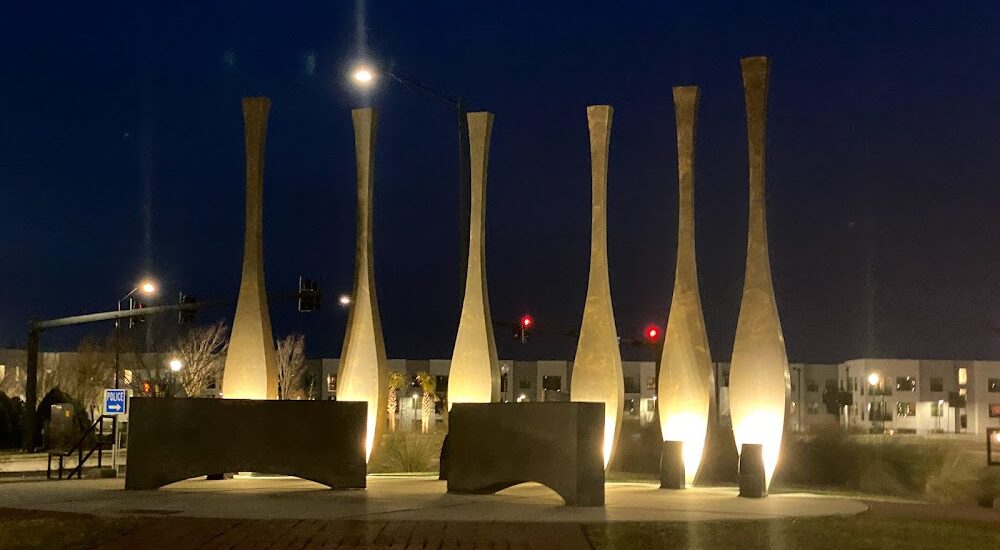Welcome to the 1898 Memorial Park in Wilmington, North Carolina, a solemn yet pivotal landmark that commemorates one of the most significant and tragic events in American history. The park is dedicated to the memory of the Wilmington Coup of 1898, the only successful coup d’état in United States history. On November 10, 1898, a group of white supremacists violently overthrew the legally elected, biracial government of Wilmington, which was then the largest city in North Carolina. This coup resulted in the deaths of an unknown number of Black citizens and the forced exile of many more, dramatically shifting Wilmington’s demographics and power dynamics.
The park itself was established in 2008, 110 years after the coup, as a place for reflection and education. It features six imposing bronze paddles, each standing 16 feet tall, symbolizing the spiritual significance of water in African traditions and the journey of African Americans in the Cape Fear region. The paddles are accompanied by a bronze wall inscribed with a narrative detailing the events of 1898, offering visitors a deeper understanding of this dark chapter in history.
The coup was led by prominent local figures, including Alfred Waddell, a former Confederate officer, who incited a mob to attack the Black community and its institutions, most notably burning down the offices of The Daily Record, a Black-owned newspaper. The newspaper’s editor, Alexander Manly, had written editorials that challenged the racial norms of the time, which fanned the flames of racial tension.
The repercussions of the coup were felt for generations, as it effectively disenfranchised Black citizens and cemented white supremacy in the political and social fabric of Wilmington and beyond. The events of 1898 are crucial for understanding the racial and political dynamics of the South during the Jim Crow era and highlight the systemic barriers faced by African Americans in their struggle for equality.
Through its evocative sculptures and informative displays, 1898 Memorial Park serves not only as a reminder of past injustices but also as a beacon for healing and progress. It invites visitors to reflect on the resilience of those who suffered and to engage in meaningful dialogues about race, democracy, and justice in America.






